The Mystery of the Iron Bridge
BBC Time Watch
October 2001, shown early 2002.
Contact us01484 428203Erecting the Iron Bridge
This is a half scale model showing the early stages, which is an experiment to help us learn more about how the full size Iron Bridge may have been put up.
The first 3 ribs have been erected, but the full size bridge has 5 ribs linked by many more castings.
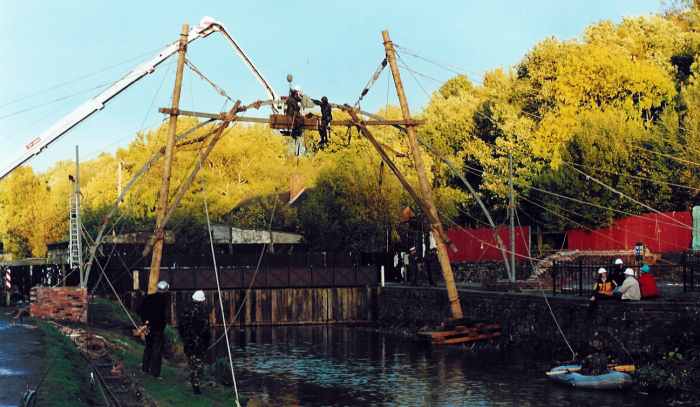
Timber scaffold and castings based on Marten's painting of 1779
The timber scaffold and the iron castings you see are based on a painting of 1779. The iron pieces were cast in open sand moulds, just like the original bridge. The Timber works as a crane with several lifting points to raise the iron from a barge on the water below.

Timber crane lifting iron from a barge
Soldiers from the Royal Engineers (51 Field Squadron) erected the scaffold and the ironwork using 18th Century methods. It proved that this arrangement was possible.
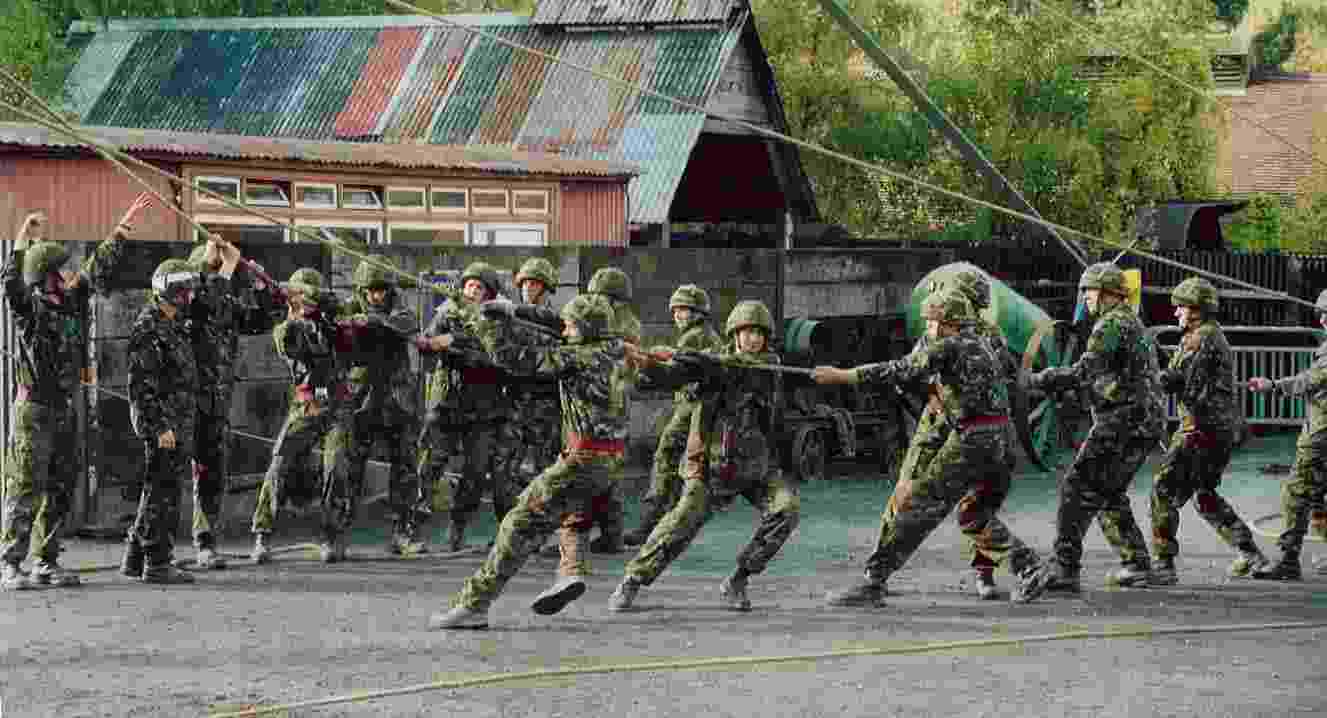
51 Field Squadron
Here the job is finished at the first rib the next photographs were taken later when all three were assembled.
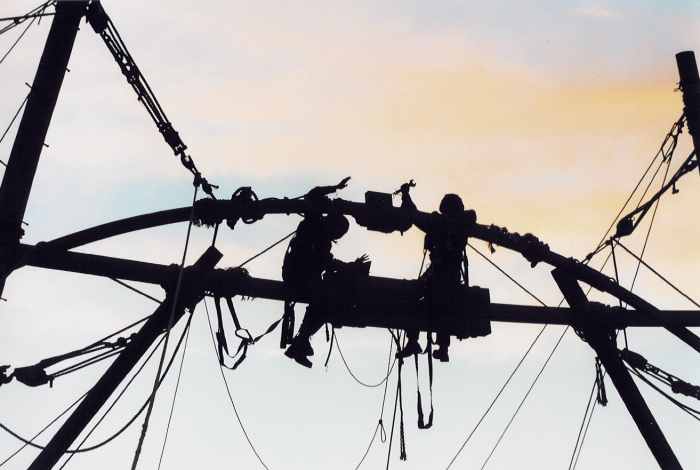
First rib finished
The image shows the circle formed by the reflection
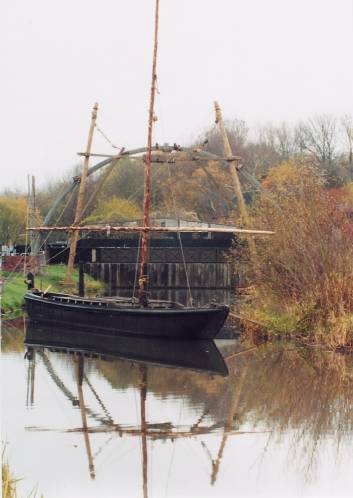
Circle formed by the reflection
Three ribs locked into the uprights with the cross stays
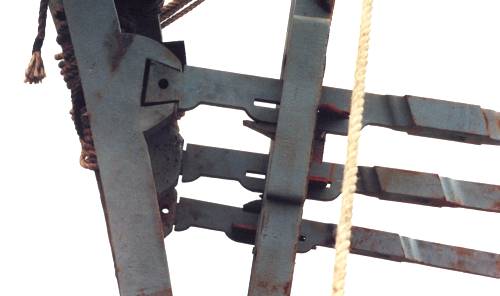
Three ribs locked into the uprights
The completed assembly can now be seen at the Ironbridge Museum Telford.

Assembly complete
Project Team
- Producer
- Deborah Perkin - BBC Wales
- Historic Adviser
- David de Haan - Ironbridge Gorge Museum
- Project Engineer
- Jamie Hillier - Buro Happold
- Erection Team
- Royal Engineers, 51 Squadron (Air Assist) Led by Lt. Ben Day
- Iron Castings
- Nigel Downs - H.Downs & Sons Ltd Huddersfield
- Ironwork Technical Drawings
- Bill Blake - English Metric Survey Team Heritage
- Structural evaluation
- Andrew Smith
- Site Management
- Alex Medhurst - Ironbridge Gorge Museum
- Abutments/site support
- Staff - Blists Hill Victorian village
Technical
Ironwork
The original ribs were cast in 2 pieces joining at the centre, each half weighing 5.75 tons. At half scale, they weigh only 15 cwt (680Kg). The span of 1 arc is 50feet (15.24m) and the chord length of each rib was 37 feet (11.3m). In the uprights holes would allow other parts of the bridge to be slotted in place.
Scaffold
The timber poles used for erection are 33 feet (10m) high, though the original scaffold poles would have stood in the river Severn and must have been nearly 70 feet (21.3m). They acted as derricks (cranes) and the frame may have been moved to a new position for each rib.
Ropes
Only hemp ropes were used to build the model,hauled by teams of soldiers. Some ropes have since been replaced by steel cables for safety. A trial lift of a 5 ton weight using the scaffold, hemp ropes and pulleys required 25 people to raise it from the ground.
Abutments
The original abutments are in stone, not brick as shown here, they provide support for the base plates. Only the middle 3 base plates out of a set of 5 have been used, these are only 1" (25mm) thick, unlike the originals which were 4" (100mm).